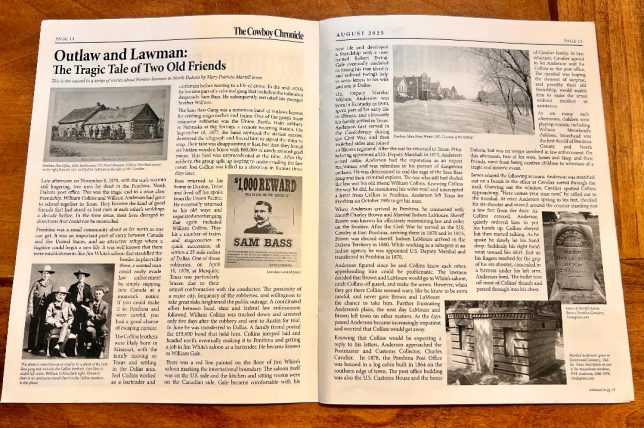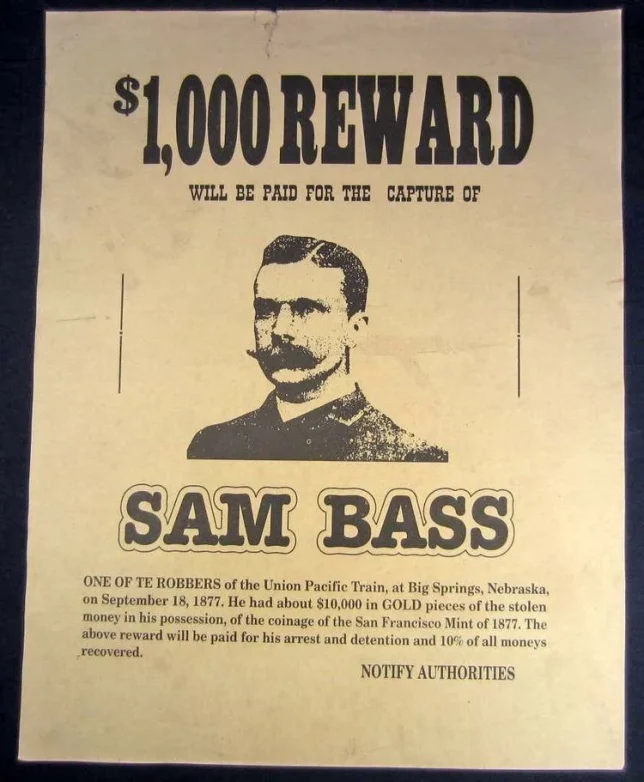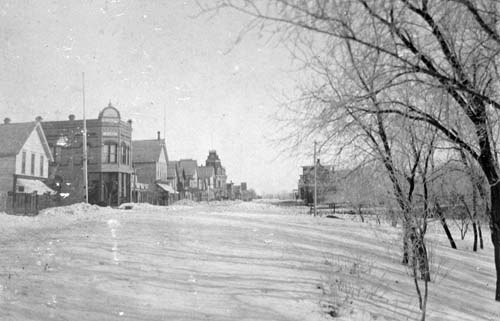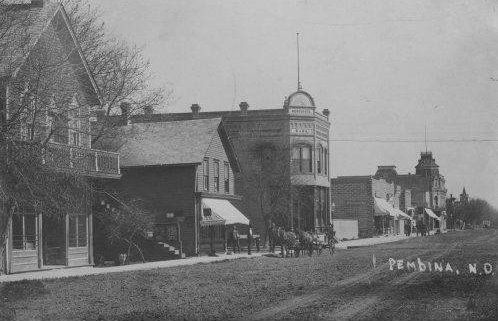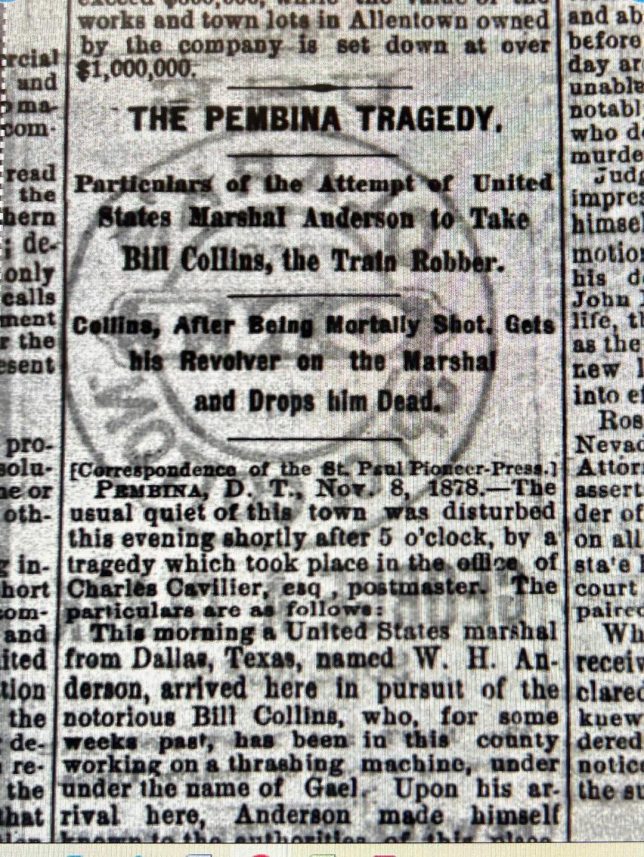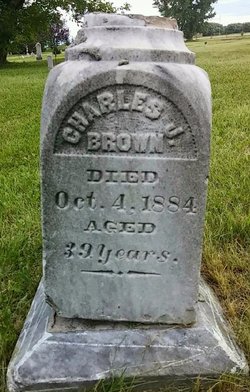Outlaw and Lawman: The Tragic Tale of Two Old Friends
Published in The Cowboy Chronicle, August 2025
The second in a series about frontier lawmen
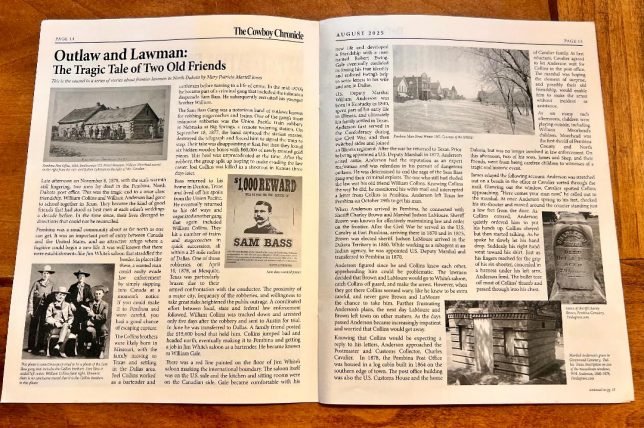
Late afternoon on November 8, 1878, with the sun’s warmth still lingering, two men lay dead in the Pembina, North Dakota post office. This was the tragic end to a once close friendship. William Collins and William Anderson had gone to school together in Texas. They became the kind of good friends that had stood as best men at each other’s weddings a decade before. In the time since, their lives diverged in directions that could not be reconciled.
Pembina was a small community about as far north as one can get. It was an important port of entry between Canada and the United States, and an attractive refuge where a fugitive could begin a new life. It was well known that there were establishments like Jim White’s saloon that straddled the border. In places like these, a wanted man could easily evade law enforcement by simply stepping into Canada at a moment’s notice. If you could make it to Pembina and were careful, you had a good chance of escaping capture.
The Collins brothers were likely born in Missouri, with the family moving to Texas and settling in the Dallas area. Joel Collins worked as a bartender and cattleman before turning to a life of crime. In the mid 1870’s he became part of a criminal gang that included the infamous desperado Sam Bass. He subsequently recruited his younger brother William.
The Sam Bass Gang was a notorious band of outlaws known for robbing stagecoaches and trains. One of the gang’s most infamous robberies was the Union Pacific train robbery in Nebraska at Big Springs, a remote watering station. On September 18, 1877, the band captured the station master, destroyed the telegraph and forced him to signal the train to stop. Their take was disappointing at first, but then they found six hidden wooden boxes with $60,000 of newly minted gold pieces. This haul was unprecedented at the time. After the robbery, the group split up hoping to make evading the law easier. Joel Collins was killed in a shootout in Kansas three days later.
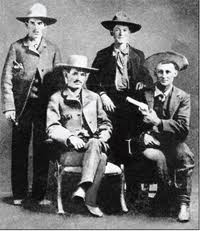
Bass returned to his home in Denton, Texas and lived off his spoils from the Union Pacific. He eventually returned to his old ways and organized another gang that again included William Collins. They hit a number of trains and stagecoaches in quick succession, all within a 25 mile radius of Dallas. One of those robberies, on April 10, 1878, at Mesquite, Texas was particularly brazen due to their armed confrontation with the conductor. The proximity of a major city, frequency of the robberies, and willingness to take great risks heightened the public outrage. A coordinated effort between local, state and federal law enforcement followed. William Collins was tracked down and arrested only five days after the robbery and sent to Austin for trial. In June he was transferred to Dallas. A family friend posted the $15,000 bond that held him. Collins jumped bail and headed north, eventually making it to Pembina and getting a job in Jim White’s saloon as a bartender. He became known as William Gale.
There was a red line painted on the floor of Jim White’s saloon marking the international boundary. The saloon itself was on the U.S. side and the kitchen and sitting rooms were on the Canadian side. Gale became comfortable with his new life and developed a friendship with a man named Robert Ewing. Gale eventually confided in Ewing his true identity and enlisted Ewing’s help to write letters to his wife and son in Dallas.
U.S. Deputy Marshal William Anderson was born in Kentucky in 1840, spent part of his early life in Illinois, and ultimately his family settled in Texas. Anderson first served in the Confederacy during the Civil War, and then switched sides and joined an Illinois regiment. After the war he returned to Texas. Prior to being appointed a U.S. Deputy Marshall in 1872, Anderson raised cattle. Anderson had the reputation as an expert marksman and was relentless in his pursuit of dangerous outlaws. He was determined to end the saga of the Sam Bass gang and their criminal exploits. The one who still had eluded the law was his old friend William Collins. Knowing Collins the way he did, he monitored his wife’s mail and intercepted a letter from Collins in Pembina. Anderson left Texas for Pembina on October 29th to get his man.
When Anderson arrived in Pembina, he connected with Sheriff Charley Brown and Marshal Judson LaMoure. Sheriff Brown was known for effectively maintaining law and order on the frontier. After the Civil War he served in the U.S. Cavalry at Fort Pembina, arriving there in 1870 and in 1875, Brown was elected sheriff. Judson LaMoure arrived in the Dakota Territory in 1860. While working as a subagent at an Indian agency, he was appointed U.S. Deputy Marshal and transferred to Pembina in 1870.
Anderson figured since he and Collins knew each other, apprehending him could be problematic. The lawmen decided that Brown and LaMoure would go to White’s saloon, catch Collins off guard, and make the arrest. However, when they got there Collins seemed wary, like he knew to be extra careful, and never gave Brown and LaMoure the chance to take him. Further frustrating Anderson’s plans, the next day LaMoure and Brown left town on other matters. As the days passed Anderson became increasingly impatient and worried that Collins would get away.
Knowing that Collins would be expecting a reply to his letters, Anderson approached the Postmaster and Customs Collector, Charles Cavalier. In 1878 the Pembina Post Office was housed in a log cabin built in 1864 on the southern edge of town. The post office building was also the U.S. Customs House and the home of Cavalier family. At first reluctant, Cavalier agreed to let Anderson wait for Collins in the post office. The marshal was hoping the element of surprise, and possibly their old friendship, would enable him to make the arrest without incident or assistance.
As on many such afternoons, children were playing outside, including William Moorhead’s children. Moorhead was the first sheriff of Pembina County and North Dakota, but was no longer involved in law enforcement. On this afternoon, two of his sons, James and Shep, and their friends, went from being carefree children to witnesses of a tragic and historic event.
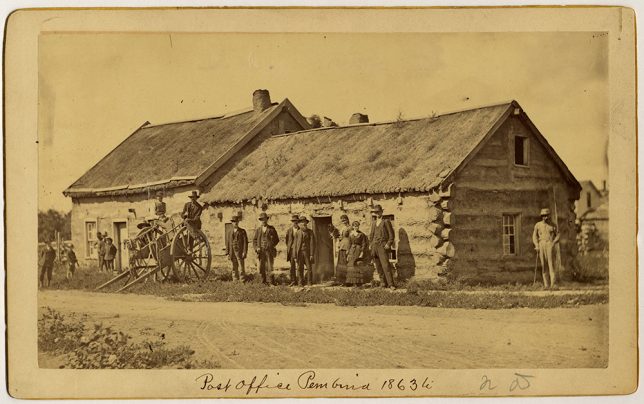
James relayed the following account: Anderson was stretched out on a bench in the office as Cavalier sorted through the mail. Glancing out the window, Cavalier spotted Collins approaching. “Here comes your man now,” he called out to the marshal. At once Anderson sprang to his feet, checked his six-shooter and moved around the counter standing just a few feet from the door. As Collins entered, Anderson quietly ordered him to put his hands up. Collins obeyed but then started talking. As he spoke he slowly let his hand drop. Suddenly his right hand went toward his shirt. Just as his fingers reached for the grip of his six-shooter, concealed in a harness under his left arm, Anderson fired. The bullet tore off most of Collins’ thumb and passed through into his chest.
Though mortally wounded, Collins was determined to not go down without a fight, and managed to draw his weapon. Collins fired a shot as Anderson dashed to the back of the room and escaped though the kitchen door. Collins then maneuvered past the stove to get a clear line of sight to the door. Anderson, attempting to return, cautiously peered through the open doorway, but exposed himself enough for Collins to shoot him before collapsing himself. As the boys looked through the window watching all this unfold, Collins’ first bullet passed within an inch of young Moorhead’s friend. When the shooting was over, both men lay dead, Anderson wearing the gold cufflinks Collins had given him at his wedding.
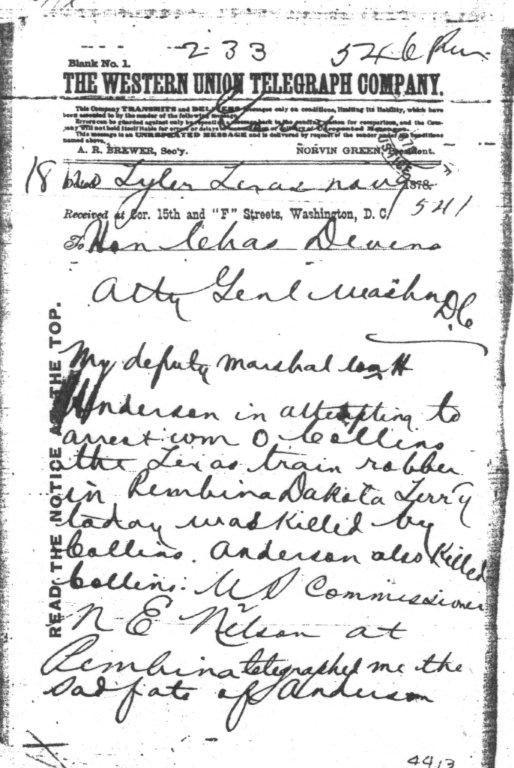
Epilogue:
After the fatal gunfight, Moorhead rushed to the scene and helped manage the situation. Ironically, Sheriff Brown returned to town just hours after the shootout. He would later comment, “Gale (Collins) told Jud and me that he’d have it out with Anderson. He sure did!” Brown continued as Sheriff of Pembina County until he was taken ill and died in 1884. He is buried in the Pembina Cemetery.
Judson LaMoure served as marshal for many more years before entering politics. He has more geographical locations named for him in North Dakota than anyone else, and two U.S. Navy ships have been christened USS LaMoure County in his honor.
Deputy Marshal Anderson made his final journey home by train, and was laid to rest at Greenwood in Dallas. His wife and two children received the $10,000 reward that had been offered for the capture of William Collins.
Officials arrived from Texas to identify the body of Collins, but he did not return home; he was buried in an unmarked grave in the Pembina Cemetery.
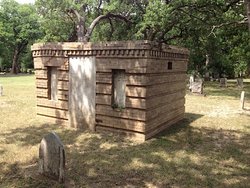
Inscription on one of the mausoleum windows, W.H. Anderson , 1840-1878,
Findagrave.com
In May of 1883, the old log Pembina Post Office was torn down. On the day it was demolished, the front door still bore the bullet hole from the shootout five years earlier.
Historical Note: Many details of the lives of those involved in the Pembina Post Office shooting vary. There are no official records that confirm the friendship between Collins and Anderson, but there are local historical accounts that speak of it.
Pembina Shootout
Resources:
Benjaminson, Jim, Sagas of Pembina County 1867-2017, 150 years of North Dakota’s Oldest County c. 2020, https://digitalhorizonsonline.org/digital/collection/ndsl-books/id/76779
https://www.newspapers.com/image/416289445/?match=1&clipping_id=174780195
https://news.prairiepublic.org/main-street/2018-12-13/judson-lamoure
https://postalmuseum.si.edu/collections/object-spotlight/pembina-post-office-photograph
https://www.newspapers.com/image/23834593/?match=1&terms=marshal%20anderson
https://www.newspapers.com/image/351373872/?match=1&terms=marshal%20anderson
https://www.newspapers.com/image/358733441/?match=1&clipping_id=174780807
https://56755.blogspot.com/2007/03/chapter-iv-sheriff-charley-brown.html
https://truewestmagazine.com/article/a-shootout-between-friends/
https://www.pressreader.com/usa/valley-city-times-record/20210311/281487869099961
https://www.odmp.org/officer/printview/1228-deputy-us-marshal-william-h-anderson
